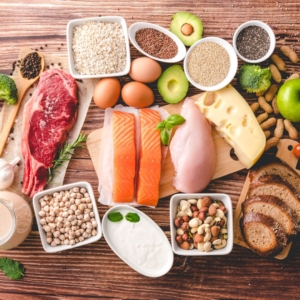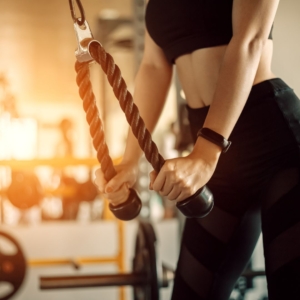The No-Nonsense Guide to Building Muscle (What the Research Actually Says)
Last Updated December 5th
If you want results you can see and feel, stop guessing and start using what the best evidence shows. Dr Brad Schoenfeld is one of the most cited hypertrophy researchers in the world. Below, we translate his findings into a simple plan you can follow at Green Gym Group—no gimmicks, just what works.
This article is your evidence based muscle building guide—plain-English steps from Dr Brad Schoenfeld’s research.
Evidence Based Muscle Building: Key Principles
1) What really makes muscles grow?
Mechanical tension is the main driver. You create it by lifting challenging loads through a meaningful range of motion and progressing over time. Muscle damage and metabolic stress can contribute, but they aren’t the goal. You don’t need to chase soreness to grow. journals.lww.com+2PubMed+2
How to apply it
-
Pick big, stable lifts you can load and control.
-
Add small amounts of weight/reps each week (or get the same work done faster).
-
Aim to keep 1–3 reps in reserve (RIR) on most sets; push closer to failure on the last set if you’re recovering well.
2) Do you have to train to failure?
Short answer: No. Meta-analyses including Schoenfeld’s group show similar hypertrophy whether you train to failure or stop a couple of reps shy, provided effort and total work are high. Failure is a tool, not a rule. PubMed
Use it smartly
-
Last set to (or very near) failure on machines/isolations if you like.
-
Keep a rep or two in the tank on big compounds to protect form and recovery.
3) Volume & frequency: how much is enough?
-
Volume (weekly hard sets per muscle): There’s a dose-response—more (to a point) grows more. As a rule of thumb, ~10–20 sets/muscle/week works for most; start low and add only if you’re recovering. PubMed
-
Frequency: When volume is matched, training a muscle 1–3+ times/week builds a similar amount of muscle; frequency mainly helps you spread volume so quality stays high. PubMed+1
-
A controlled trial in trained lifters found higher weekly volume produced greater growth, reinforcing the “do enough quality work” message. PubMed
4) Metabolic stress (the “burn”) helps—but isn’t everything
Chasing a pump can add to the growth signal, likely via metabolite build-up and extra fiber recruitment. But it supplements mechanical tension rather than replaces it. Use shorter rests or finishers after your main lifts, not instead of them. link.springer.com
5) Intensity techniques (drop sets, rest-pause)
Great for time-efficiency. Studies (including one co-authored by Schoenfeld) show similar hypertrophy to traditional sets when total work is matched—often in less time. Use them to fit volume into busy weeks. PubMed+2pmc.ncbi.nlm.nih.gov+2
6) Range of motion (ROM)
Training through a full or long ROM generally improves hypertrophy versus partials—especially for the lower body. Prioritise depth/lengthened positions you can control. pmc.ncbi.nlm.nih.gov
7) Rep speed (tempo)
A wide range of tempos works. Meta-analysis shows 0.5–8 seconds per rep produces similar growth; ultra-slow reps (>10 s) underperform. Control the weight, don’t overthink the stopwatch. PubMed
8) Rest periods
Don’t rush your rests on big lifts. A trial in trained lifters found longer rests (~3 min) outperformed short rests (~1 min) for strength and muscle gains. Save shorter rests for accessories. PubMed
9) “We used to think…” (myths the field moved on)
-
“You must train to failure every set.” Not required for growth; near-failure + enough volume works. PubMed
-
“Higher frequency is always better.” It’s mostly a way to organise volume; quality beats cramming. PubMed
-
“Soreness = growth.” Muscle damage isn’t the goal. Progress load/reps over time instead. PubMed
Your 8-Week Muscle Plan (3 days/week)
Goal: ~10–15 hard sets per muscle per week, mostly 6–12 reps, RIR 1–3. The days can be moved to suit your own schedule.
Monday
-
Back squat 3×6–10 (rest 2–3 min)
-
Bench press 3×6–10 (2–3 min)
-
Seated row 3×8–12 (2 min)
-
DB Romanian deadlift 2–3×8–12 (2 min)
-
Cable lateral raise 2–3×10–15 (90 s)
Wednesday
-
Deadlift (or trap-bar) 3×4–6 (3 min)
-
Overhead press 3×6–10 (2–3 min)
-
Split squat 3×8–12/leg (2 min)
-
Lat-pulldown or pull-ups 3×6–12 (2 min)
-
Incline curl 2–3×10–15 (90 s)
Friday
-
Leg press 3×10–15 (2 min)
-
DB bench or machine press 3×8–12 (2 min)
-
Chest-supported row 3×8–12 (2 min)
-
Hip thrust 2–3×8–12 (2 min)
-
Triceps pressdown 2–3×10–15 (90 s)
Progression: Add a rep each set until the top of the range, then +2.5–5 kg and repeat.
Time-crunched? Turn the last set of 1–2 accessories into a drop-set or rest-pause finisher. PubMed+1
Nutrition essentials: 1.6–2.2 g protein/kg/day, 3–5 meals with ~25–40 g protein each, creatine monohydrate 3–5 g/day, calories aligned with your goal.
Bookmark this evidence based muscle building plan and follow it for 8 weeks.
FAQs (quick answers)
Do I need heavy weights for growth?
Heavy loads are great for strength, but hypertrophy can be achieved across a wide loading spectrum if sets are hard enough. PubMed+1
How many sets per week?
Most lifters grow well at ~10–20 sets per muscle/week; adjust up/down based on recovery and progress. PubMed
Is a slow tempo better?
Not necessarily. Anything from 0.5–8 s/rep works; just control the weight and hit near-failure. PubMed
How long should I rest?
2–3 min on big compounds, 1–2 min on small lifts. Longer rests help you lift more quality volume. PubMed
Ready to turn research into results?
-
Free intro session & plan: see how we’ll tailor your sets, volume and recovery.
-
Coaching: technique, progression, and accountability built in.
-
Simple membership: no gimmicks—just training that works.
Sources (Dr Brad Schoenfeld’s work, selected)
-
Mechanisms of hypertrophy: mechanical tension, metabolic stress, muscle damage. journals.lww.com
-
Muscle damage & hypertrophy (critical view). PubMed
-
Metabolic stress & hypertrophy. link.springer.com
-
Volume dose–response (weekly sets). PubMed
-
Training frequency (volume-equated). PubMed+1
-
Low- vs high-load training (strength vs size). PubMed
-
Repetition duration (tempo) meta-analysis. PubMed
-
Range of motion review. pmc.ncbi.nlm.nih.gov
-
Rest period trial (longer > shorter for growth). PubMed
-
Rest-pause/drop-set vs traditional (time-efficient).






